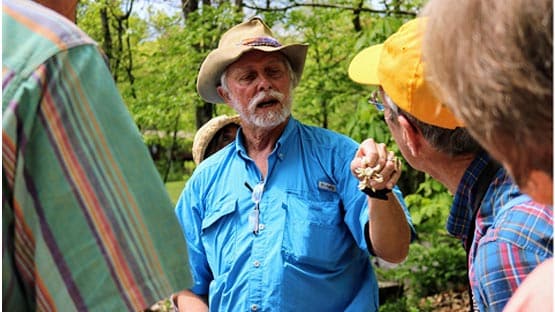
Through a partnership between the Virginia Department of Forestry (VDOF) and The Nature Conservancy (a private, non-profit conservation organization), the Nottoway Pinelands FLP project expands land holdings critical to longleaf pine forest and red-cockaded woodpecker recovery in Virginia.
Virginia’s southern pinelands are the birthplace of America’s forest products industry. Set at the northernmost range of longleaf pine, the region’s managed forests sustain water quality in the Albemarle-Pamlico watershed, support diverse wildlife and plant species, and provide numerous recreational opportunities to the public. Thanks to over two decades of effort by multiple agencies and organizations, a landscape of more than 10,000 acres of forestland is now being managed and conserved in Sussex County.
Management will balance the needs of the endangered red-cockaded woodpecker with opportunities for public recreation and timber production, benefiting the region’s billion-dollar forest products industry, biodiversity, and the residents of the Commonwealth. This conserved landscape includes Big Woods State Forest, Big Woods Wildlife Management Area, and Piney Grove Preserve.
“The success and significance of this small project is entirely owing to the strength of the longleaf pine partnership between state agencies, private groups, and individual citizens,” said VDOF Forest Legacy program coordinator Andrew Fotinos. “Thanks goes to the USDA Forest Service for recognizing the vital qualities of this forested landscape and for helping fund our work via the Forest Legacy Program.”
Protection of the 640 acres occurred in two parts. VDOF used FLP funds to purchase the 200-acre Turlington Tract addition to the Big Woods State Forest. In addition, The Nature Conservancy was able to buy the 441-acre Harrell’s Mill Tract adjacent to its Piney Grove Preserve, thanks in part to VDOF’s use of FLP funds to purchase a perpetual conservation easement on the tract. Virginia Department of Wildlife Resources and Virginia Department of Conservation and Recreation are also active partners in managing the entire 10,000-acre landscape for the needs of wildlife, forests, and people.
“Over the past 15 years, support from the Forest Legacy Program has been key to the protection of thousands of acres of forestland vital to the future of plant and animal biodiversity at the northern edge of the longleaf ecosystem. Each acre acquired is a step towards rebuilding Virginia’s amazing longleaf forest,” said Brian van Eerden, Director of the Virginia Pinelands Program at The Nature Conservancy.
The region’s conserved pinelands are Virginia’s foremost location for teaching about longleaf pine and fire-adapted forests. The new tracts will enhance longleaf pine restoration efforts, as well as recovery and expansion of the red-cockaded woodpecker’s population and range. Protection of 110 acres of forested wetlands and four miles of streams accomplished via this FLP project will also help safeguard the Nottoway River as a water supply for more than 800,000 people in the Hampton Roads area.
The FLP is administered by the USDA Forest Service in partnership with state agencies. It promotes the conservation of privately-owned forestlands through conservation easements or land purchases. Protection of working forests provides many benefits, including recreational opportunities, clean water, fish and wildlife habitat, and forest products.
“The USDA Forest Service is thrilled to contribute to this extraordinary conservation project through the Forest Legacy Program. Virginia’s southern pinelands are a treasure, providing numerous water quality, wildlife and recreational benefits to the public. We are grateful to the landowners, the Virginia Department of Forestry, and the many partners who worked together to leave this lasting legacy for all to enjoy,” said Southern Region regional forester Ken Arney.










